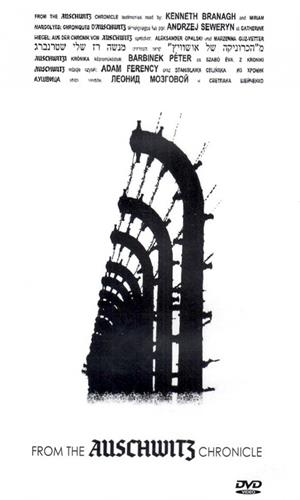Description
“Z Kroniki Auschwitz” – to cykl pięciu dokumentalnych filmów, który stara się zachować i przybliżyć pamięć o tragedii ludzkości, jaką był obóz koncentracyjny Auschwitz-Birkenau w Oświęcimiu. Przybliżyć młodym, którzy dopiero poznają świat. Okruchy relacji oraz wycinki kroniki złożyły się na warstwę narracyjną filmów.
Dzięki metodzie realizacji filmy osiągnęły wartość źródła historycznego. Cytaty z relacji byłych więźniów czytają lektorzy: mężczyzna i kobieta. Opowiadane historie osiągnęły dzięki temu spójność i jednorodność, przemawiają do widza swoją treścią, budują rzadko spotykany poziom emocji.
W warstwie obrazowej filmów poznajemy miejsca akcji, widzimy obóz dzisiaj, patrzymy na zdjęcia osób, których relacji słuchamy – w każdym przypadku, gdy takie zdjęcie się zachowało. Zdjęcia odwiedzających Miejsce Pamięci tworzą szczególny kontekst dla opowiadanych historii. Malarstwo i grafika pokazywane w filmach jest nie tylko informacją, stanowi często najsilniejszy element filmowej narracji.
From The Auschwitz Chronicle is a series of five documentary films, which attempt to preserve and highlight the memory of this human tragedy that was the Auschwitz-Birkenau concentration and death camp. It also attempts to acquaint young people with it who are still forming their own view of the world. Fragments of testimonies, episodes from the chronicle form the basis for the narrative layer of the films.
Due to the way in which they are made, the films have the value of a historical source. Extracts from testimonies of former prisoners are read by narrators, a man and a woman. As a result, the related histories attain a cohesion and homogeneity, gripping the viewer with their content and building a level of emotion rarely encountered.
In the visual element of the films, the viewer confronts the actual places these events occurred, is taken to the camp today, and shown the photographs of the people whose stories are being told — whenever such photographs have survived. The images of people visiting the Auschwitz Memorial create a compelling context for these stories. The paintings and drawings shown in the films are not only informative; they frequently constitute the strongest element of the visual narration.
„Aus der Chronik von Auschwitz“ – ein Zyklus von fünf Dokumentarfilmen, die das Gedenken über das Konzentrationslager Auschwitz-Birkenau als die Tragödie der Menschheit bewahrt und versucht, jungen Leuten, die erst die Welt kennenlernen, näher zu bringen. Auszüge aus der Chronik stellen die Grundlage für die Erzählungsschichte der Filme dar.
Dank der Realisierungsmethode haben die Filme den Wert einer historischen Quelle erhalten. Zitate aus Relationen von ehemaligen Häftlingen werden durch einen Mann und eine Frau vorgelesen. Erzählte Geschichten haben dank dessen den Zusammenhang und die Einheit erhalten. Sie sprechen die Zuschauer durch ihren Inhalt an und bauen ein seltenes emotionales Niveau.
In der Bildschicht der Filme sehen wir Orte der Aktion. Wir sehen das Lager heute. Wir sehen Fotos von Personen und hören ihre Relationen – in jedem Fall, wenn so ein Foto bewahrt wurde. Fotos von Besuchern der Gedenkstätte bilden einen besonderen Kontext für erzählte Geschichten. In Filmen gezeigte Malerei und Graphik sind nicht nur Information, sondern oft das stärkste Element der Erzählung.
« Chroniques d’ Auschwitz » – est une série de cinq films documentaires qui vise à commémorer cette tragédie humaine qu’était le camp de concentration d’Auschwitz-Birkenau. Il vise à la rapprocher aux jeunes qui ne commencent qu’à découvrir le monde. Les morceaux de relations et les séquences de la chronique constituent la couche narrative des films.
Grâce à la méthode de réalisation, ces films ont la valeur d’une source historique. Les citations des relations d’anciens prisonniers sont lues par les lecteurs : un homme et une femme. Par conséquent, les histoires racontées ont atteint la cohérence et l’uniformité ; elles parlent au spectateur par leur contenu et font naître un rare niveau d’émotions.
Par la couche visuelle des films nous pouvons connaître le lieu d’action, nous voyons le camp d’aujourd’hui, nous regardons les photos des personnes dont les relations sont lues – dans tous les cas où une telle photo est préservée. Les photos des visiteurs du Mémorial constituent un contexte spécifique pour les histoires racontées. La peinture et l’art graphique présentés dans les films ne sont pas fournis seulement à titre d’information, mais ils constituent souvent l’élément le plus fort de la narration du film.






